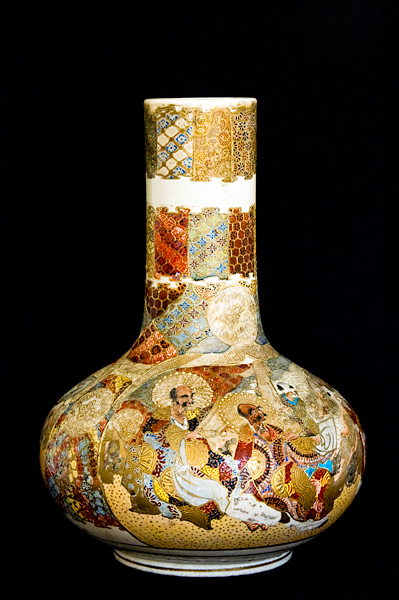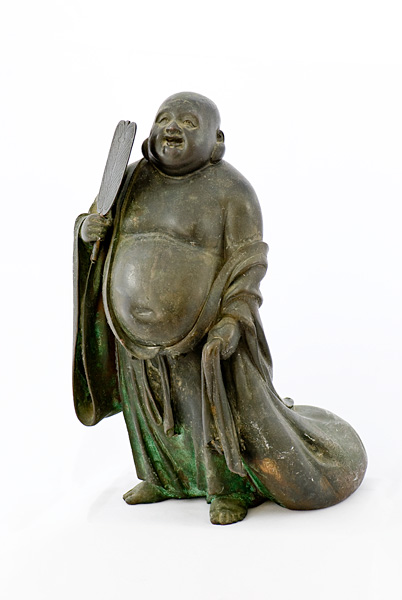| |
|

|
Japanese Vase
Family heirloom, history unknown.

Detail
This vase came from Polly Horne and had been
originally converted into a lamp. Has been in the family forever and my
first memory was in the late 60's when I took off the lamp appliance. |
|
Ho Tai
(Laughing
Buddha)
Ho Tai is widely referred to by
non-Buddhists as the "laughing Buddha" or "happy Buddha". Many believe he is
an incarnation of a Buddha who will appear in the future and might properly
be called bodhisattva.
Ho-Tai was a Chan monk who lived in
Southern China around the 9th century CE. He worked in a monastery kitchens
and loved his food and was always happy with his menial tasks. Ho-Tai
probably would have been totally forgotten, but for his habit of visiting
local villages to distribute sweets to the children and poor. Ho-Tai could
produce a toy for a sullen child, or bring a bowl of sweetened rice to the
impoverished. Ho-Tai was a local legend, and after his death his fame spread
widely across China. The interesting thing is that Ho-Tai is regarded by
many Buddhists as a Bodhisatva (not a Buddha), but he was elevated to
divinity by the Taoists. By the time Westerners came into China, Ho-Tai was
the God of Good Luck and Laughter. He was the "patron saint" of children,
somewhat like Santa Claus. Small statues of Ho-Tai found their way into
Western collections and were often mistakenly identified as statures of the
Buddha.
This bronze statue is 10-1/4" high and
depicts Ho Tai pulling a bag which legend says was full of toys for village
children. It may have been a gift to Polly Horne from John O'Brien who
probably picked it up while serving in Korea during the 50's. Been in the
family as long as I can remember. |

|
|
Elephant Bells
The bells are cast in factories in a small
town called Jalesar. This is a town in a northern state of India, called
Uttar Pradesh; an area well known for brass work. The cloisonn-like coloring
is done in another town situated close by, called Moradabad. The bells are
hung about the elephant's necks so the Mahouts can locate their animals
while they are out in the jungles .
The style of these bells has not changed
since the 17th century as can be seen on Mughal paintings from that period. |
 |
|
coming |
Brass Cigarette Case
Etched Dragon |
| |
|
Useful
Resources
|
|
|

Authentic
Artifact
Collectors
Association
______
Overstreetid.com
The Official Overstreet Indian
Arrowhead Identification Online Database
______
|
|
|
|
|
|
|